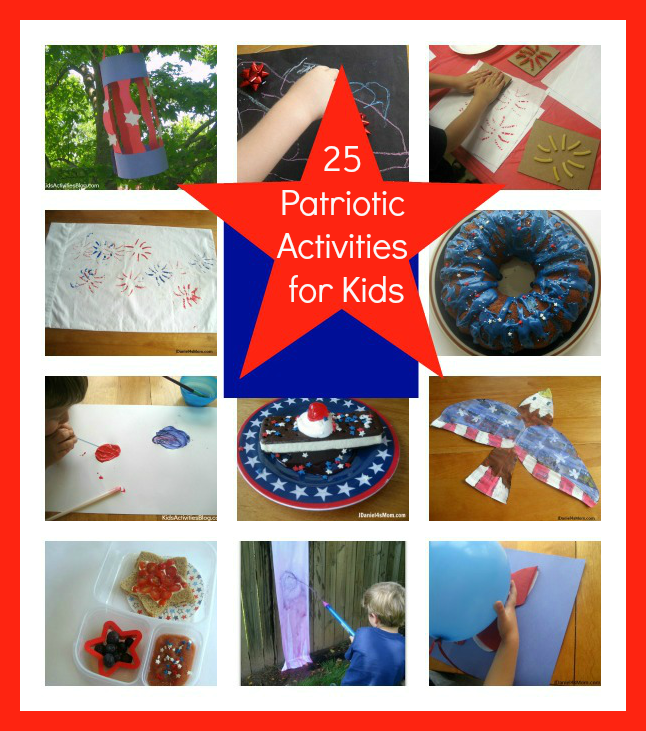

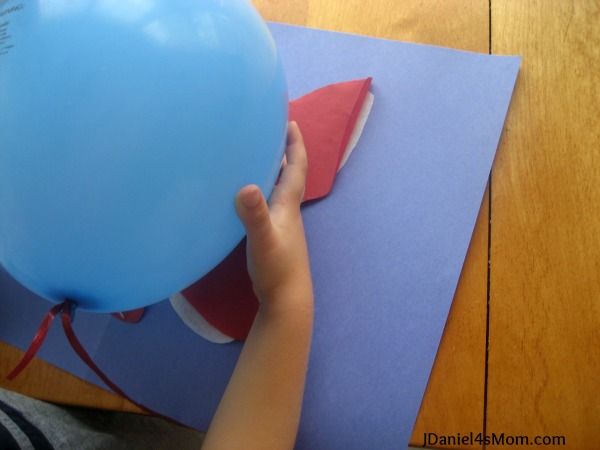
I Spy 4th of July Words
Kid Friendly Meals
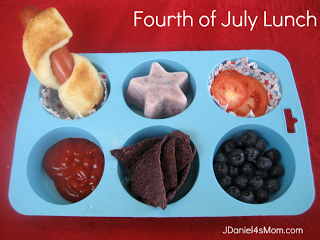
Memorial Day Picnic Foods Meal
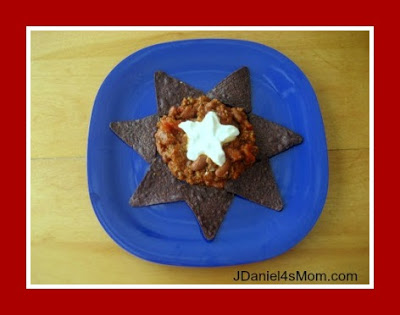

10 Fourth of July Books for Kids

growing & learning with him
By Deirdre



Kid Friendly Meals

Memorial Day Picnic Foods Meal



By Deirdre

I didn’t realize that there were locations around the United States that hold an annual butterfly site count on of the 4th of July at until we read the book Butterfly Count by Sneed Collard III (2002-03-01). Butterfly Count is the story of a little girl named Amy and how she and her mom participate in a butterfly count.
Amy and her mother find a wonderful variety of butterflies during their butterfly site count. They even find a very rare butterfly that many had thought was no longer in the area. What a wonderful way to spend the 4th of July.
This wonderful story teaches children how to attract and identify butterflies where they live. It also gives you information on finding 4th of July Butterfly Site Count sites near you hosted by the North American Butterfly Association. I wasn’t able to find one near us maybe you will be able to find one near you.
Butterfly Wing Experiment
This experiment using several layers of tissue paper, construction paper and a balloon was to explore how static electricity stored in a balloon can be transferred to tissue paper. During the transfer of electricity, the wings of the tissue paper butterfly would flap just like a real butterfly.
We started by cutting the outline of a butterfly out of tissue paper that had been layered to give us several layers of tissue to flap when the balloon was stroked over it.

The tissue layers were then stapled to a piece of construction paper.( Next time I think we will staple our butterflies to cardboard. It would give them some more support.)
We started the experiment with six layers of tissue we soon learned that that was way too many layers. Only the top two layers of wings flapped. We pulled some of the tissue butterflies of the stack. The remaining butterfly layers flapped or lifted up more easily when we rubbed a balloon over the tissue. Rubbing the balloon on your head and then the tissue butterflies really helped the wings to flap. We had a great time exploring electricity with this experiment.
Butterfly Sight Word Match

I asked him to read me the word on each butterfly and then find its match on the paper. When he had found all the matches, I had him remove each word butterfly and read it to me.
Butterfly Number Count
This was so easy to put together. I just placed the butterfly outline from the first activity under a piece of copy paper. Then I wrote groups of number JDaniel has trouble with in the butterfly shape on the white copy paper.

I put various colors of bingo markers on cards featuring each number. JDaniel was to use that stamp to place dots on that number to create a beautiful butterfly. After or before stamping each number, JDaniel read me that number. Yes, it was a lot of repetition, but he sometimes he forgets what these numbers are. I was hoping to put them into muscle, visual and auditory memory.
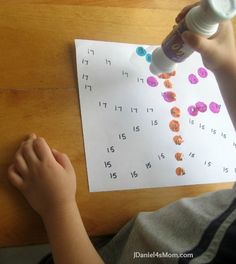

By Deirdre

I can’t believe I haven’t featured this week’s book The Very Hungry Caterpillar on Read.Explore.Learn. before. We have several copies of it in JDaniel’s room and I have read it to him a zillion times. He loves to count the fruits that the very hungry caterpillar eats as he prepares to build his cocoon.

If you aren’t familiar with the story, a little caterpillar hatches from an egg and then begins a daily inhalation of food. He starts his week of slowly and gradually eats more and more until he isn’t a little caterpillar any more. The caterpillar has digested enough to carry him through the time he is sequestered in a cocoon.
Each food he eats has a hole in the middle of it. JDaniel loves to put his finger into each hole as he counts the foods the caterpillar eats everyday. He learned to count as I read this book over and over again.
Caterpillar Snack

I am not huge on snacks. JDaniel does enjoy them though. We had green grapes, tomatoes, and watermelon in the fridge. I decided to use them to construct the caterpillar from The Very Hungry Caterpillar for him. Half a grape was used for each of the caterpillar’s sections. except his head. Half a grape tomato was used for his head. The Very Hungry Caterpillar’s antennae and feet are tiny slices of watermelon.
The caterpillar’s eyes and nose also came from the fridge. I cut tiny circles out of a flour tortilla and colored them green with a food marker.
Measuring the Caterpillar

JDaniel has been very interested in measuring with a ruler lately. He wants to find the length of the tiles in the kitchen, my foot, and his shoes. Not everything he wants to measure is completely straight. I decided to show him a trick for measuring oddly shaped objects.
I made The Very Hungry Caterpillar out of construction paper. The caterpillar is simply a piece of green paper folded in half with connecting curves cut out of it. It front and back ends are reflections of each other.
Then we took yarn and organized it inside the caterpillar’s body to follow its curves. We lifted the yarn up very carefully and lined it up above a ruler. The yarn length of the caterpillar was longer than the ruler. We wrote twelve inches onto the white paper. I had JDaniel hold the remaining length of the yarn while I recorded the first length. We then measured the remaining yarn. It turned out to be eight inches. The caterpillar didn’t look twenty inches long, but that is what he turned out to be.

JDaniel has really gotten into learning to read. We have been working on six sight words a week. This week I thought we would play a game to help him review the words we have worked on. I made a The Very Hungry Caterpillar game board using a paint program.
He earned a red pom pom for the first word he recognized and a green pom pom for the remaining words he read. The goal was to review six words at time. I ended up having to print out two game boards. JDaniel remembered so many of the words and he loved earning pom poms for the caterpillar.

By Deirdre
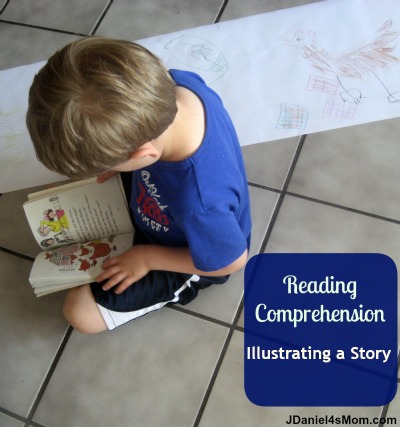
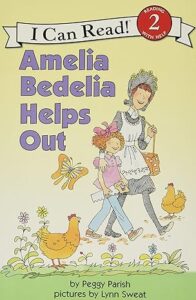
JDaniel and I have read this story many many times in the past. Since we have been talking about gardening for the past few weeks, this book so needed to be read again. A few of her mistakes are related to gardening. She weeds the garden by adding weeds. She stakes the beans by wrapping steaks around them. Amelia uses a duster to dust the potato bugs with bug powder.
She also does several other odd things thinking she is doing the right thing. You just have to love her and giggle at what she does that is part of the fun of reading her stories.
Picture walking through a story means you flip through a story and look at the clues the pictures give as to what is happening in the story. Illustrating a story is the opposite of picture walking. During illustrate a story, a child flips through a book and looks for key concepts and pictures in a story they have already heard or read. They then draw them on a larger roll of paper in the order they happened in the story.
We looked through the story and picked four of the events that we wanted to draw. Both JDaniel and I worked on the drawings and we talked about what was happening in that part of the story.
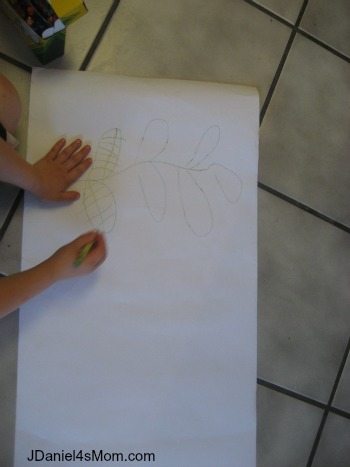 |
| Drawing Weeds |
I drew the weeds and JDaniel added details to them. We talked about how they needed to be very big weeds just like the ones Amelia Bedelia had added to the garden.
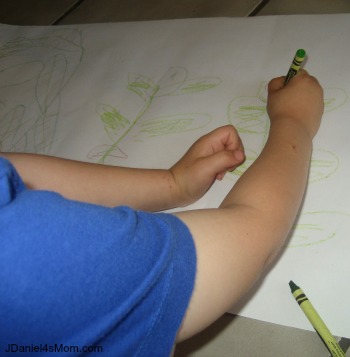 |
| Drawing Bean Plants and Steaks |
It was so much fun to draw the bean plants and add pink steaks onto them. We don’t eat steaks often at our house. JDaniel kept having to refer to the book to see what they looked like.
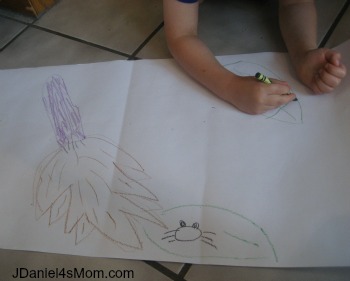 |
| Dusting Potato Bugs |
I tried drawing a potato bug like the one in the book and JDaniel told me it was not exciting. I didn’t know that they were supposed to be exciting. He grabbed a gray crayon after drawing his leaf and made one that was more exciting than mine.
 |
| Giving The Chickens Scraps |
JDaniel seemed to have lost interest in drawing when we got to give the chicken scraps of cloth. I started the chicken and he finished it. The feathers and feet are all his. I just love them.
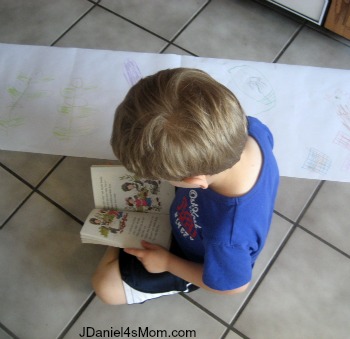
When we finished, I had him walk me through the events of the story we had selected. I was expecting to just talk about what had happened. JDaniel grabbed the book and looked through it to find each of the events. I love that he had us go through the book as we discussed it.
While his not yet reading, he has learned to show that he comprehends what is being read to him. I think we will be illustrating a story again soon. As he does learn to read and write better, I will have him add keywords from the text to the pictures. We will be doing this reading comprehension activity again.
This Mouse Needs a House Printable
Disclaimer: This post contains an affiliate link.

By Deirdre
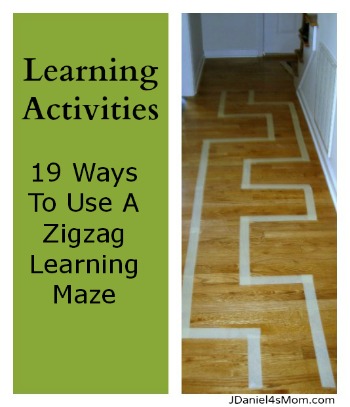
We started by simply walking up and down the center of the pathway by placing one foot in front of the other. JDaniel doesn’t usually walk this so it took at little practice.
Walking the pathway backwards was even more of a challenge. When you are looking, back your feet can sometimes step off the path without meaning too.
Trying to walk on the tape down one side of the pathway and back on the other side took a little bit of concentration.
Jumping from one side of the path to the other was easy in areas where the pathway was narrow, but was harder in the wide areas.
Challenging a partner to move down the path in a certain way was a lot of fun. Skipping, hopping, galloping, sliding, and tiptoeing down the path were each offered up as challenges.
Timing which of us could move down the path the fastest and the slowest was also fun. Walking in slow motion inspires one to move the rest of your body in slow motion too. That can bring on a lot of giggles and stifled laughs.

Pretend Play
The edge of the pathway can be lined with block shaped buildings or cardboard boxes from the recycling bin.
Toy cars can race through the maze pushed from behind by people ready to get the checkered flag.
Balls can be rolled through the pathway like pinballs zinging and pinging through a maze.
The pathway can become a waterway for bathtub boats. The corners and dead ends can be inlets off a mighty river.

Learning Activities
Once number cards have been put in place, a child could walk to each number and clap that number of times.
Sight words can be placed along the path. In order to pick up the card the word on the card would need to be read.
Books could be used to fill up all the space on the pathway and they would then be counted.
The pathway could be the home to a giant concentration game. The cards could be spread out along the path. Children could walk up and down the path looking for matches.
Washcloths could be used to fill in the path. They could then be counted to find the area of the path.
What are some other ways we could learning using the zigzag pathway?
This post is linked to Mrs. Matlock’s blog.

By Deirdre
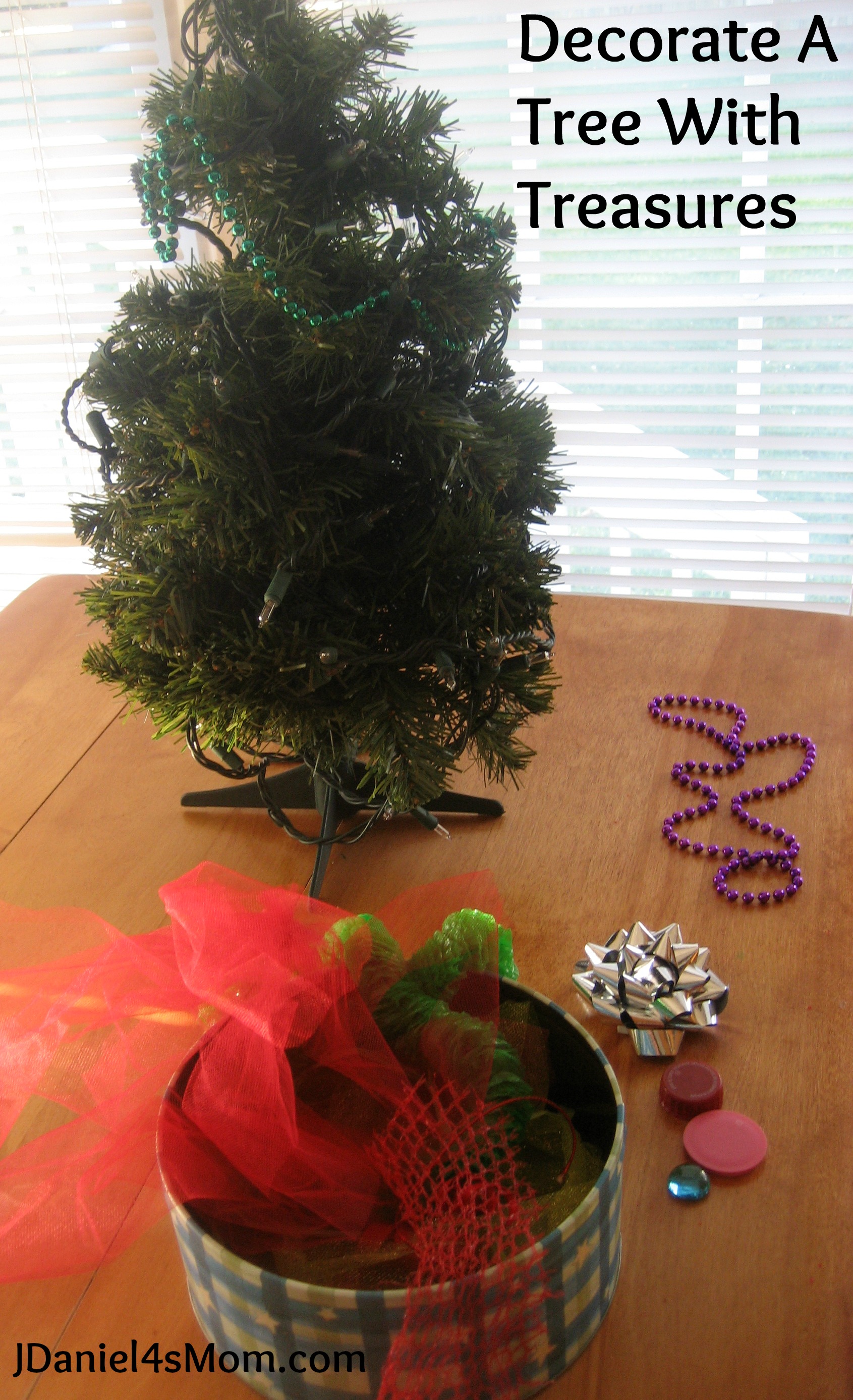
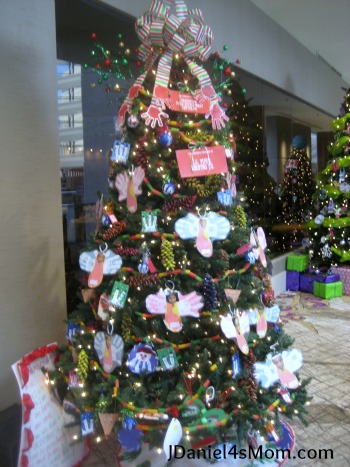
We have a three foot tree that we put out for JDaniel upstairs that had yet to be decorated. Seeing all those wonderful trees gave me an idea. Why not have JDaniel decorate the tree with recycled treasures. He loves to collect treasures and used them to create with.
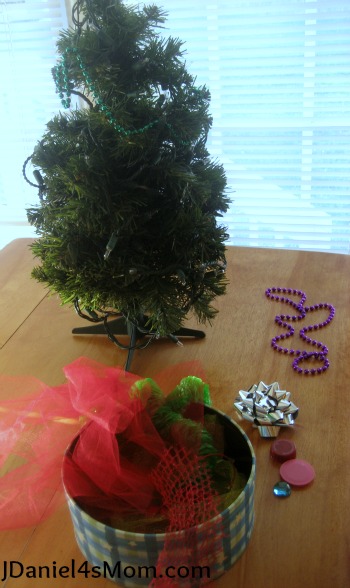
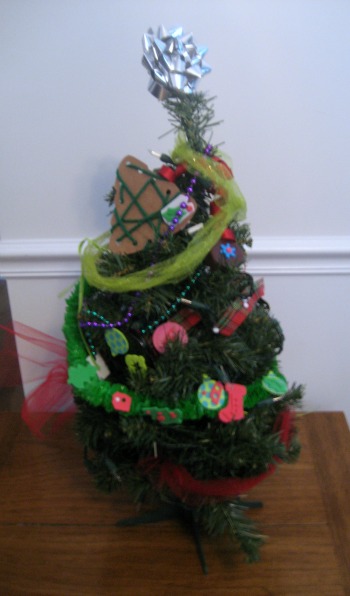
Fine Motor Christmas Activities

By Deirdre
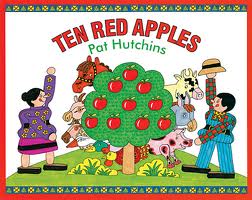
We read the book ten apples this week. What fun counting book! The farmer tries to count the apples and his animals want to eat them. This book is filled with humor, problem solving and cute pictures.
What did we do with the book Ten Apple?

JDaniel’s job was to put the pieces in order and then glue them onto a piece of blue paper. It took a lot of figuring to get the pieces just right.
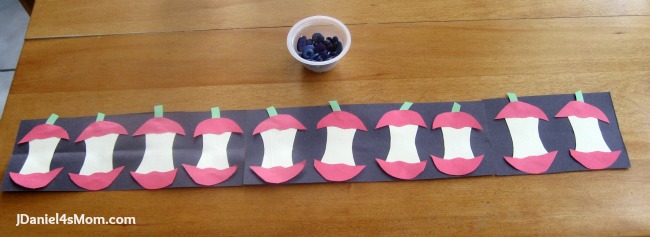
Then I took away all the odd numbered sets of buttons and we counted by twos. We could have added the button onto the apple cores by twos instead. Maybe we will do that next time.
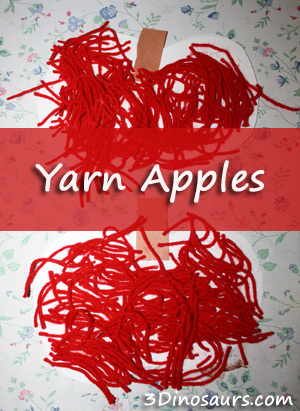
3 Dinosaurs made a wonderful apple yarn craft to go with the book Up, Up, Up! It’s Apple Picking Time!
Preschool Activities- Five Little Apples Rhymes and Crafts
Building Word Families – Worms and Apples
Cool Math Games for Kids -Appleseed Counting
Sight Word Games- Apple Tree Words

By Deirdre
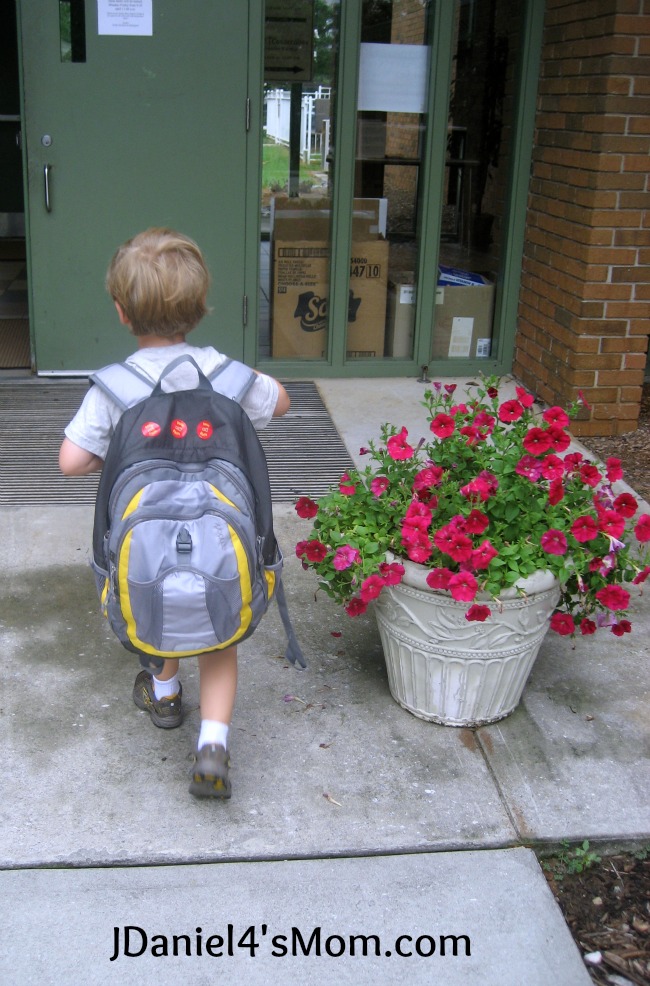

By Deirdre
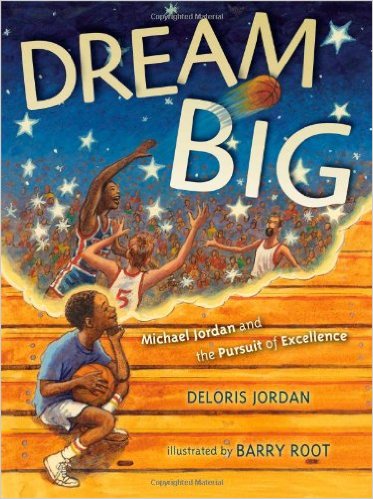
Links below are affiliate link.
Learning to Tie Shoes
When I mentioned to a friend that JDaniel wanted to learn to tie shoes, she said she learned to tie them by practicing on her dad’s shoes. We took out my husband’s shoes and we have been parallel practicing. One of us has it mastered and the other still needs a lot of practicing.
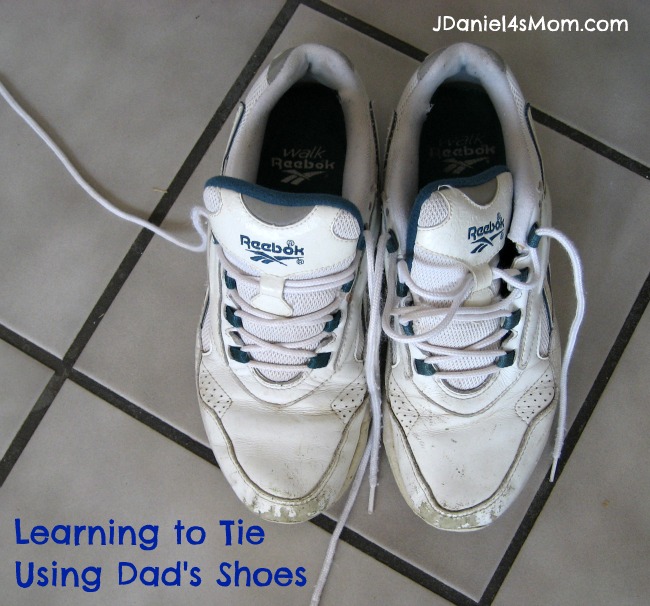
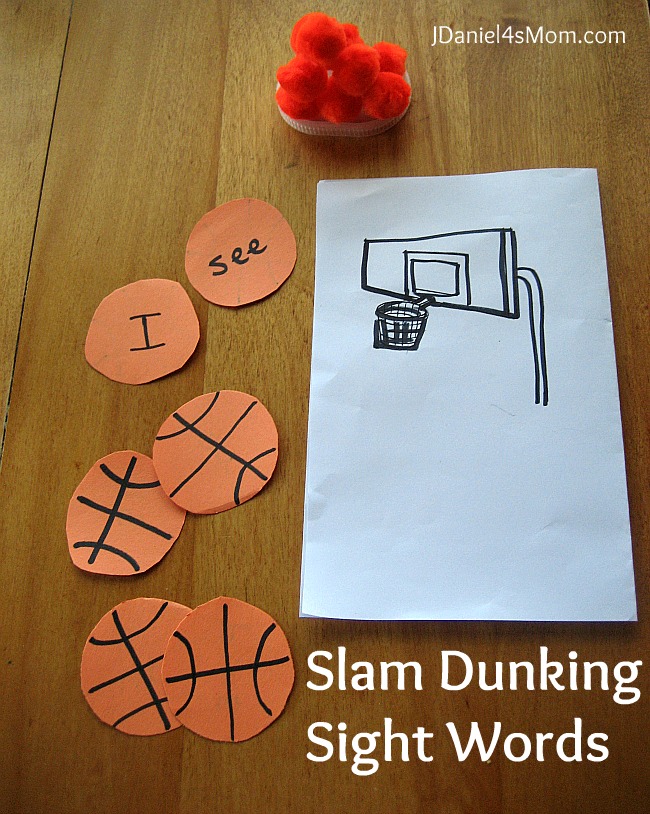
I created little basketballs that contain the first 36 Dolch Preprimer words to help JDaniel work on his dream of reading. We have been working on four words at a time.
Every time he reads me on the words he can move an orange pom-pom to the basketball hoop on paper.
I don’t want to overdo the word practice. He gets to work on each word only a few times at each sitting.
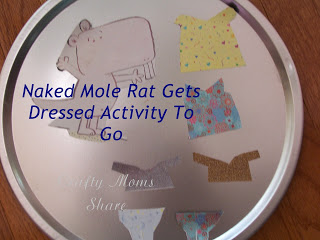
Keitha’s Chaos linked up an amazing bento lunch to that explored the book Hour of the Olympics.

Please share your book extension and exploration post below.

By Deirdre
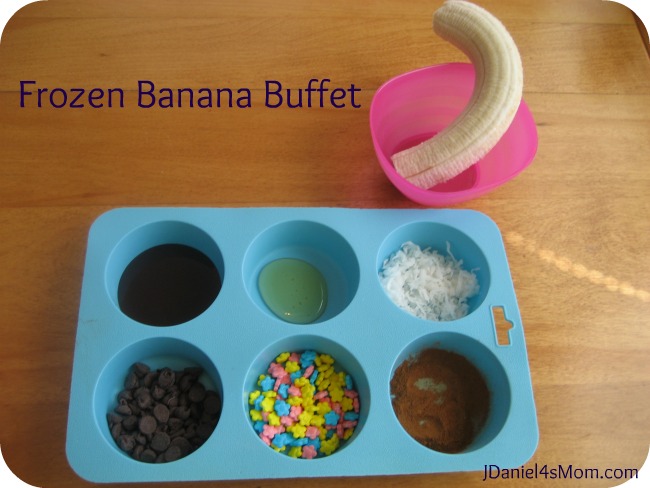
My son just loves muffin tine meals. Sometimes he helps me move his dinner into a muffin tin! There is something special about have a meal or a snack in one. JDaniel loves to have a snack after his “quiet” time in the afternoon. I decided to surprise him with a frozen banana buffet for a snack late last week. He was thrilled.
JDaniel really enjoys getting to dip foods and I have told him that he can’t double dip if other people are sharing the dip with him. This muffin tin was his alone and he was able to dip as much as he wanted to. We have a found the key to success dipping is to only put a small amount of each sauce into the muffin cups.
The buffet tin is filled with two dips and four toppings. The dips are chocolate sauce and honey. The toppings are coconut, chocolate chips, sprinkles, and cinnamon. If you children don’t like any of these sauces or toppings, please feel tree to substitute them with one that your children like.
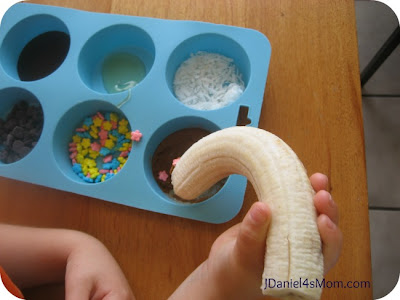
It was a lot of fun to watch JDaniel try a variety of combinations. He loved the sprinkles and coconut with honey and chocolate syrup. The cinnamon was mixed with honey more often than not.
Decorated Cheese Trees
Applesauce Toppings Bar
Easy Sight Word Snacks
4th of July Sundae
This post is linked up to Muffin Tin Monday.